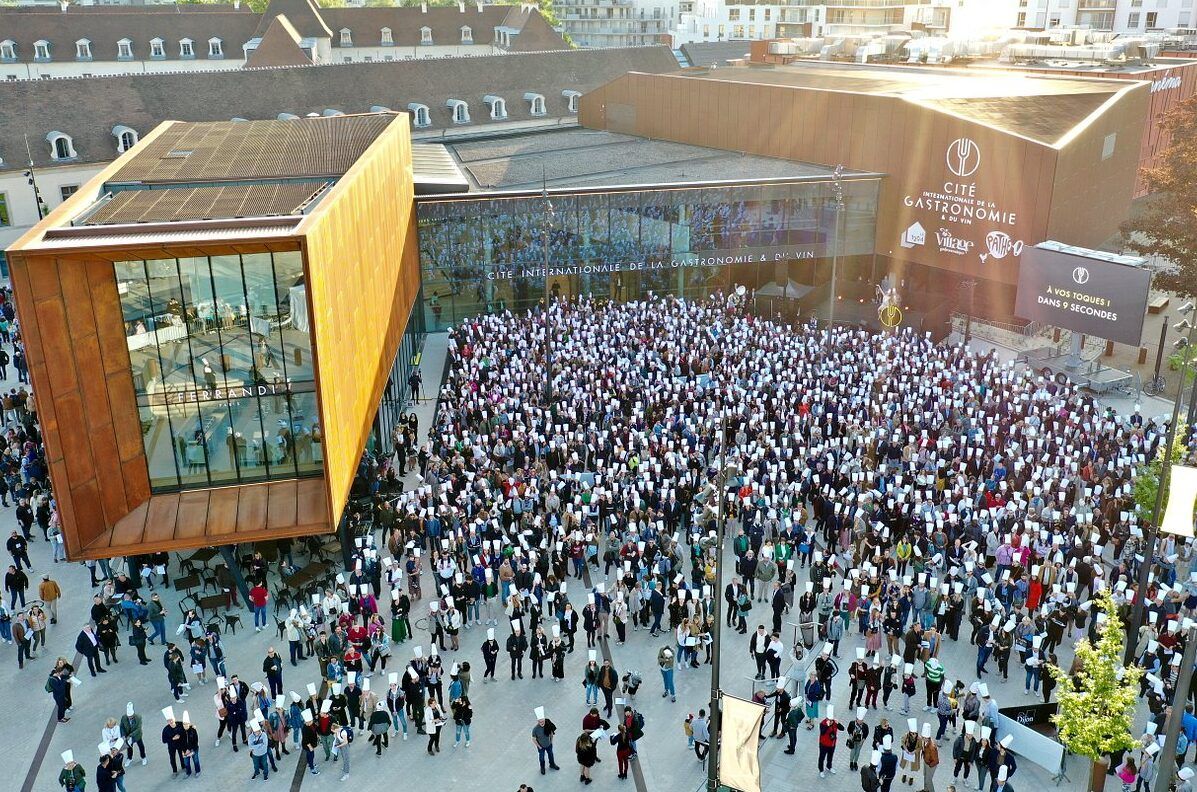“In 2013 the French government chose Dijon as one of four cities selected to showcase the country’s gastronomic heritage with Dijon’s focus being wine,” writes Dean.
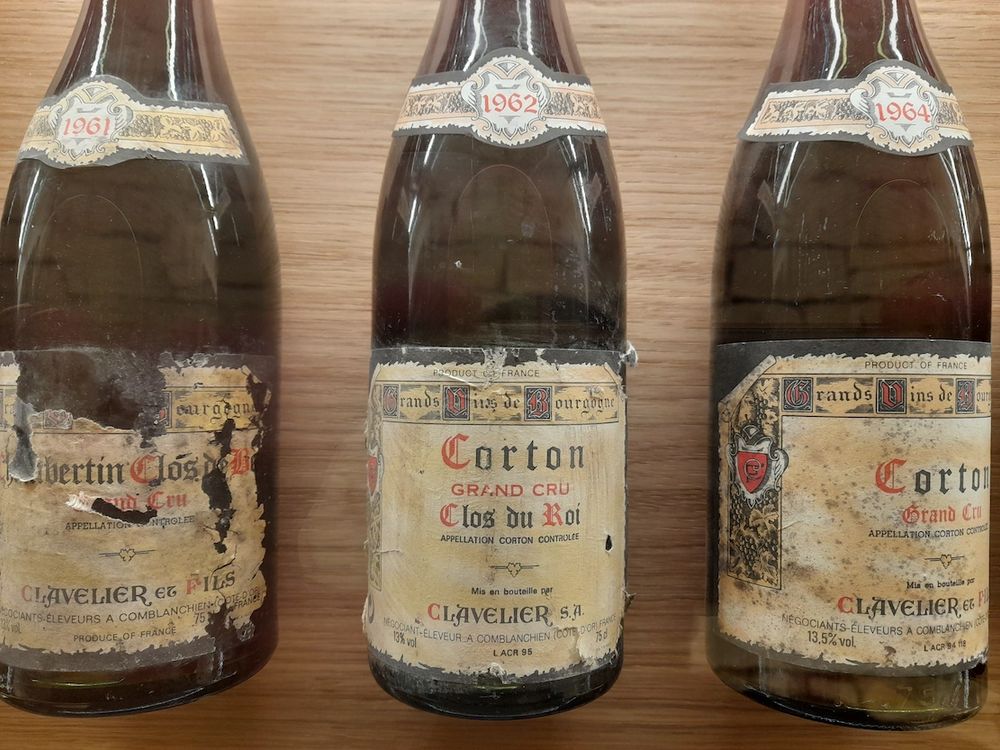
Some of the 3,000 bottles for sale at the caveau in Cité Internationale de la Gastronomie & du Vin
Less than 15 months after the opening of Dijon’s Cité Internationale de la Gastronomie & du Vin in May 2022, the monumental €280 million cultural project welcomed its millionth visitor. The Cité (or ‘Estate’) is a fitting tribute to the ambition of the Burgundian capital to broaden its allure and become a must-visit city in the region. Not that it ever lacked appeal – this sleeping giant of a tourism magnet has always had all the ingredients – but it has finally awoken from its slumber to shout its claims from the rooftops.
And what claims it has.
The vineyards of the Côte de Nuits just to the south of it, most notably Gevrey-Chambertin and Vosne-Romanée; a beautiful old pedestrianised city centre of 97 hectares with its many half-timbered buildings that is a UNESCO world heritage site, and entered via its own triumphal arch (known as Porte Guillaume); the Saint-Bénigne Cathedral and the 13th century Eglise Notre-Dame; numerous museums (all free entry) including the second biggest in France after the Louvre – the Musée des Beaux-Arts; the Palais des Ducs and its neighbouring tower of Philippe Le Bon, with its 316 steps, from which you have stunning 360-degree views of the whole city (and the Alps on a clear day).
Throw in 45,000 students who come from all over France to attend the university and the legal, medical, business and oenology schools, and you have a cornucopia of cultural, historical, architectural and human vitality.
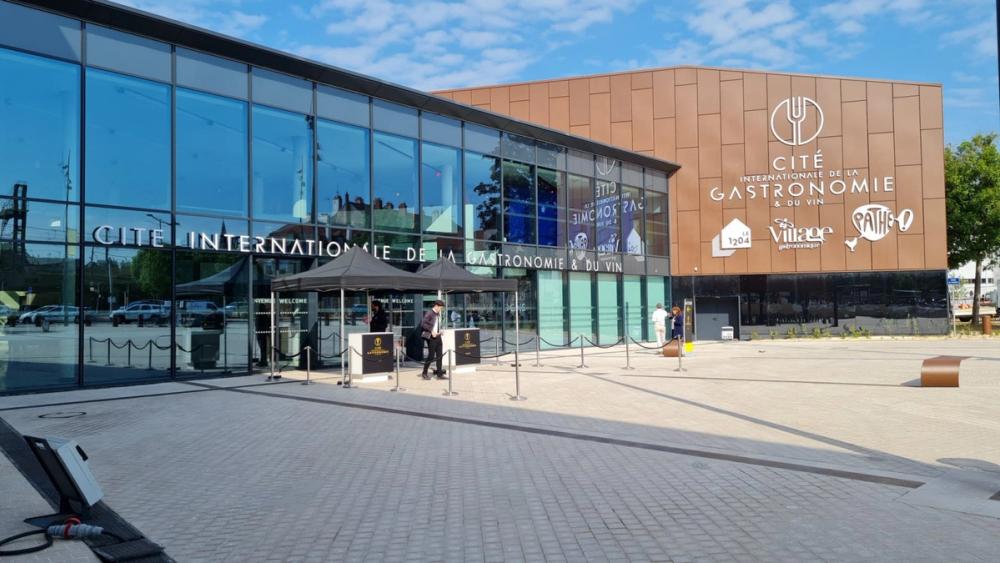
Cité Internationale de la Gastronomie & du Vin: already with a million visitors in less than two years
The new landmark destination, the Cité Internationale de la Gastronomie & du Vin, is the icing on the cake, though. A short tram-ride from the city centre, it is an imposing complex of buildings, old and modern, on a 16-acre site that was the city hospital for 600 years. Taking ten years to complete, it includes immersive exhibitions, a branch of the prestigious Parisian culinary school, L’Ecole Ferrandi, and a gastronomic village with nine themed stores (showcasing cheese, charcuterie, meat, fish, seafood, vegetables/fruit, bread, chocolate and pastries).
There are also restaurants and numerous other shops, including one, fittingly in the global capital of mustard, that sells nothing but that condiment. Of the 95,000 tons of mustard produced in France every year, as much as 90,000 tons are made in Dijon.
Last, and certainly not least, is the Cité’s extraordinary wine ‘caveau’, which has over 3,000 wines for sale (80% being Burgundian but featuring many great labels from all over the Old and New World). These vary in price from €10 to several thousand Euros, with many very old vintages found. A bottle of Chambertin Clos de Bèze Grand Cru 1961, for example, was selling for a cool €1,382. Over 250 wines are also available for tasting from enomatic vending machines that offer 3, 6 or 12 cl samples. So too are many of the world’s great whiskies, brandies and rums along with other spirits.
Journey through Burgundy’s history
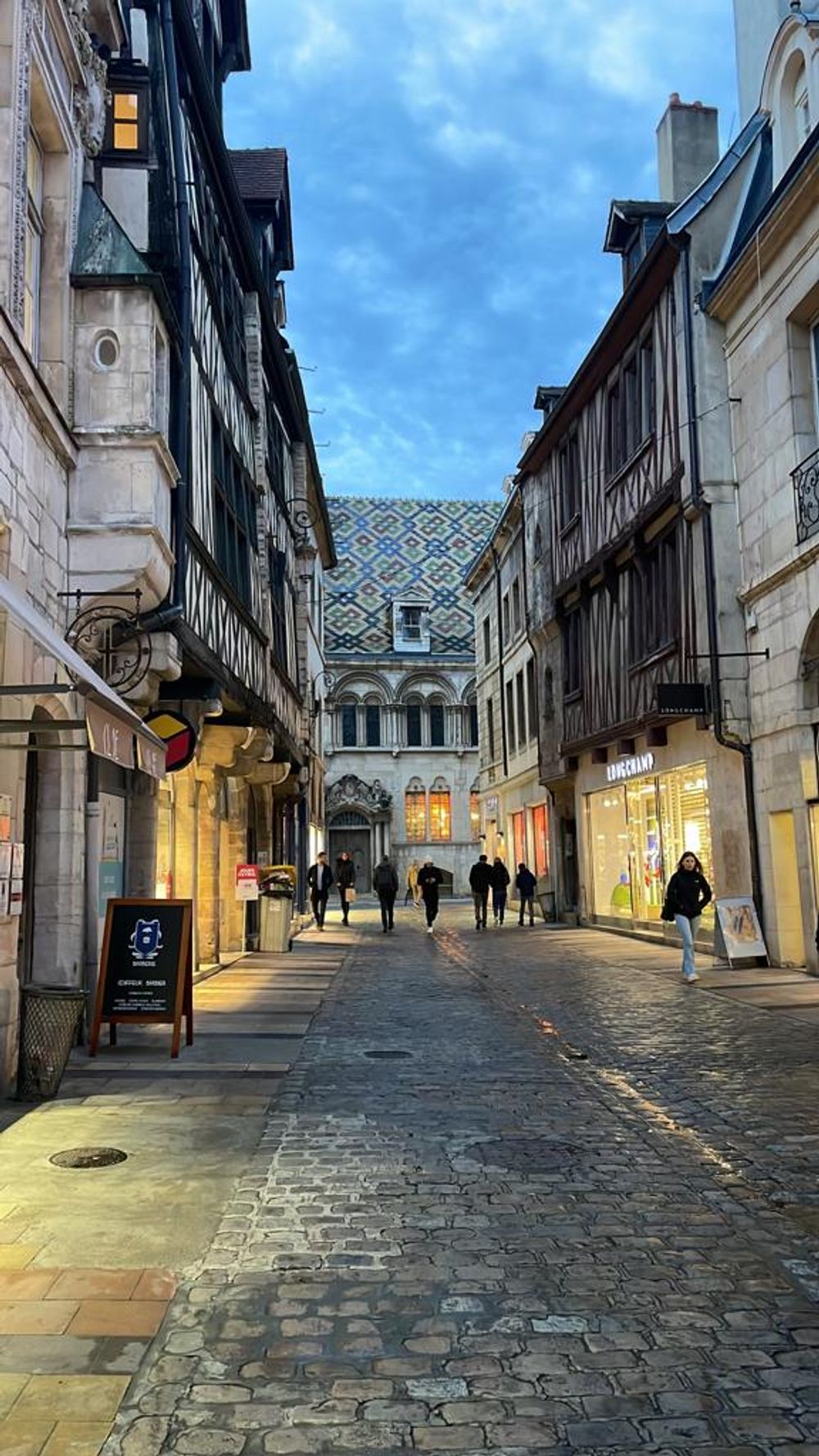
Dijon street scene
The exhibition in the beautiful reconditioned great chapel of Dijon’s former general hospital represents a journey through Burgundy’s viticulture and history. An ode to Burgundy’s ‘climats’ is the first thing that greets you, with a proud historical reference to the year of 1584 when the word ‘climat’ appeared for the first time in a document about the Clos de Bèze in Gevrey-Chambertin when the canons of Saint-Mamet use it to describe the vines at ‘champ Berthin.’
The term, used for a plot within a vineyard, spread more widely from the 17th century. “The local specificities in the geology and landscape of the climats produce very precisely defined parcels of land, sometimes down to a matter of feet,” it is pointed out, along with a reminder that Burgundy’s climats are on UNESCO’s World Heritage List.
Although it is not clear precisely when, during the Roman occupation, vines were first planted in Burgundy, Jasper Morris MW, in his authoritative tome, Inside Burgundy, speculates that it may have been by a member of the Roman professional classes based in Dijon. A revealing find in 2008 of a small vineyard on the edge of Gevrey-Chambertin was dated to the first century AD.
“This invites the picture of a Roman amusing himself by planting a ‘lifestyle’ block of vines at his weekend villa in the same way doctors and lawyers have done in Australia, New Zealand and California in the Yarra, Gibbston and Napa Valleys,” Morris writes.
A centre of French gastronomy

Dijon’s reputation as a culinary centre likewise goes back a long way, with the city’s first gastronomic fair taking place in 1921. The Cité’s gastro exhibition, which has a poster extolling the seventh such fair in 1928, provides detailed background information on the region’s gastronomic history and ‘Le Repas Gastronomique des Français’, which was UNESCO-listed in 2010.
This refers to the history of celebrating good wine and food in France. “The repas is an essential element of France’s identity, which we have perhaps taken too much for granted in the past,” Jeremie Penquer, the director of the Cité project, said. “This is why it was so important when it was recognised by UNESCO.”
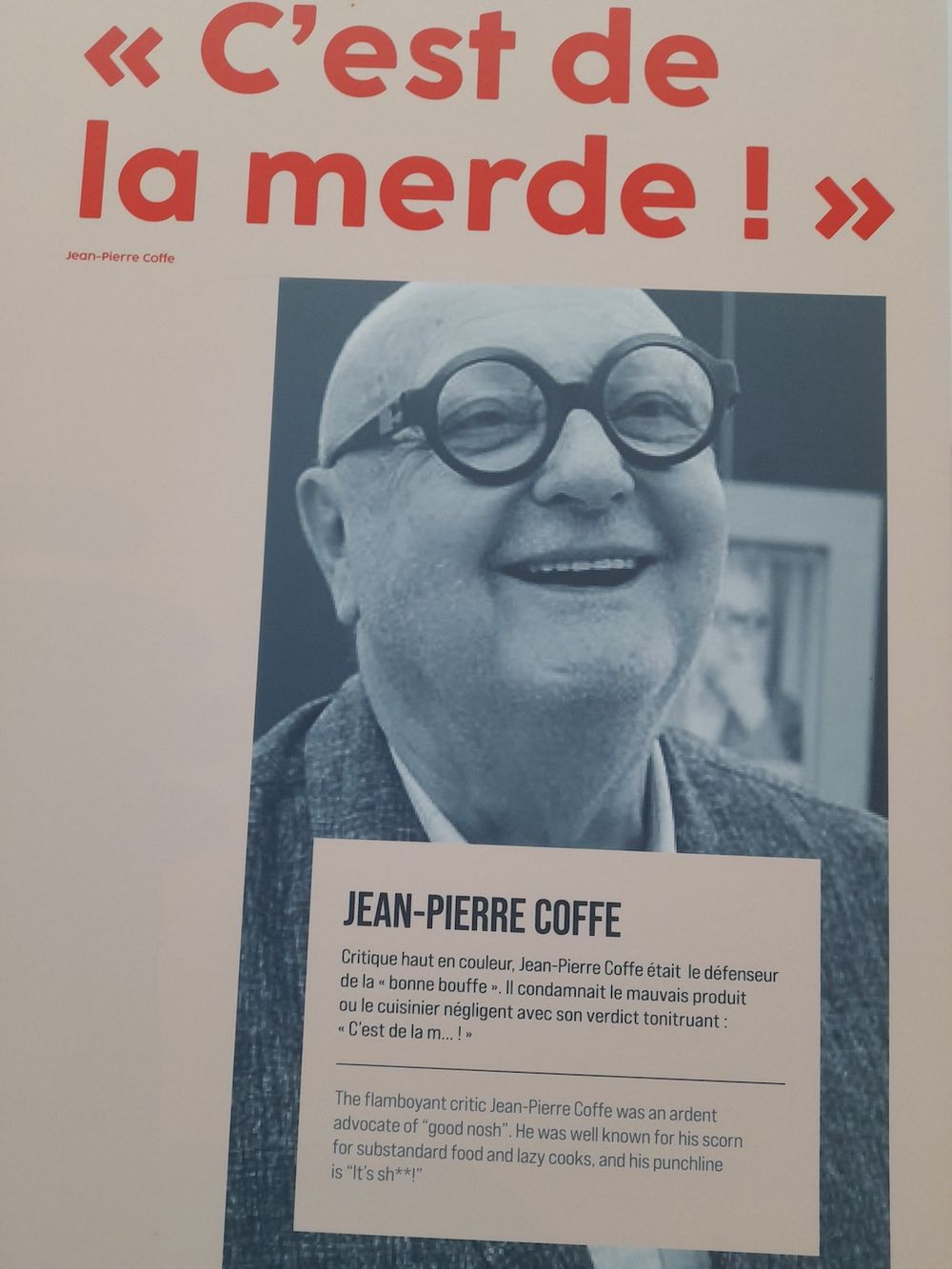
Remembered: the flamboyant late food critic Jean-Pierre Coffe
Within the gastro exhibition are portraits of ‘Les Pères Fondateurs’ (Founding Fathers) of the critical food-writing fraternity – de la Reynière, Brillat-Savarin, Curnonsky and Gault & Millau. The trip down memory lane continues with old posters of revered restaurant guides such as the Michelin of 1929 and Champerard of 1988. A beaming photo of the flamboyant late food critic Jean-Pierre Coffe adorns one wall with a reference to his love of ‘bonne bouffe’ (good nosh) and disdain of anything substandard (dismissed with his famous punchline of ‘C’est de la merde’).
There is, of course, good nosh aplenty in Dijon where, apart from its half dozen Michelin-starred restaurants, there are a plethora of Bib Gourmand ones (the label given to good value establishments with outstanding food). The excellent ‘La Table de Climats,’ situated within the Cité, describes itself as a ‘restaurant vinostronomique’ as it pairs wines with courses. Two other restaurants we ate at – a Georges Blanc brasserie, ‘Pré aux Clercs’ in the Place de la Libération, and the Grand Hôtel La Cloche – likewise served sumptuous cuisine.
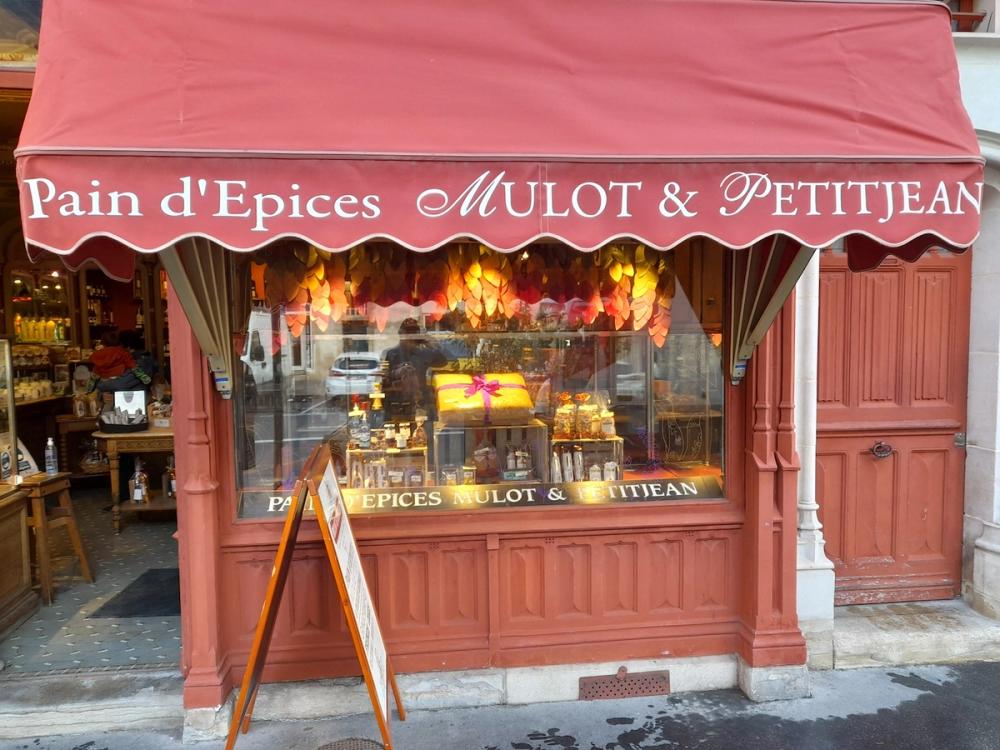
France’s best gingerbread contains no ginger
And then there is the famous Mulot & Petitjean shop, where Catherine Petitjean, a tenth generation descendant of the founders in 1796, makes some of France’s best gingerbread with a secret recipe. Known as ‘pain d’épices’ (spice bread), it actually contains no ginger.
A new cooking school, given the English name of ‘Salt and Pepper’, taught us how to prepare local delicacies such as ‘Gougères’ (cheese and egg pastries). Talking of cheese (and the 46 French varieties of it accorded AOC or the EU’s PDO status as detailed in the Cité), a Dijon wine shop named ‘La Source des Vins’ conducts an apt pairing/tasting of five Burgundian labels and five cheeses. An Aligoté went especially well with an aged Comté cheese, with the former’s sharp acidity cutting through the latter’s richness.
It has, then, been a remarkable last decade of development and recognition for Dijon. It began in 2013 when, as part of a cultural initiative launched by the French government, Dijon was one of four cities selected to showcase the country’s gastronomic heritage. Dijon’s focus was wine and its UNESCO listings, while the other three cities were Lyon (nutrition and health), Tours (human science’s link with food) and Paris (food marketing). In summer 2023, the influential OIV, the International Organisation of Vine and Wine, moved its headquarters from Paris to Dijon, further enhancing the latter’s prestige. In the meantime, the city of Dijon, at the mayor’s behest, has been buying up land on its outskirts with a view to planting vineyards. A Côtes de Dijon label would be a fitting new addition for the French city where it all seems to be happening.
Five wines that impressed

Du Grappin Bourgogne Aligoté 2021
From 80-year old vines on white limestone marl soils in Macon in La Roche-Vineuse; made by Andrew Nielsen, one of a number of Australians producing quality Burgundian wine, along with his English wife, Emma; fermented in large old oak vessels with wild yeasts
Domaine Alain Gautheron, Chablis Premier Cru, Les Fournaux 2021
Organic practices are followed on this 2.2 hectare plot but without certification; classic minerality with some saltiness on the finish; made by Cyril following father Alain’s retirement in 2019, using no oak; DIAM closure.

Domaine Jean-Pierre Maldant, Corton-Les Grandes Lolières Grand Cru 2021
Intense fruit with silky tannins and notable concentration and length. Refined and very classy.
Domaine Agnes Paquet, Bourgogne Hautes Côtes de Beaune 2021
From Pinot Noir vines in the village of Meloisey; lovely fruit with fine tannins and good length.
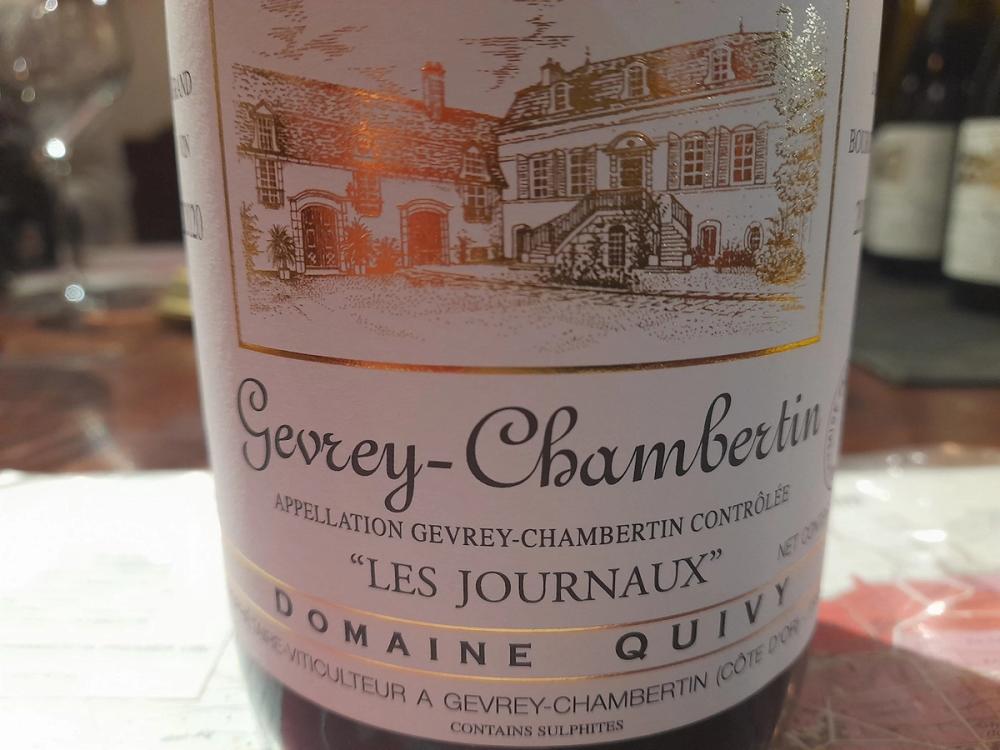
Domaine Gerard Quivy, Gevrey-Chambertin Les Journaux 2021
Single vineyard village wine from 75-year old vines on a lieu-dit just to the north of Gevrey-Chambertin; no herbicides or insecticides used; no filtration; alluring raspberry and cherry fruit with soft tannins and very fresh acidity.
